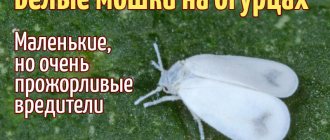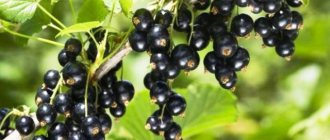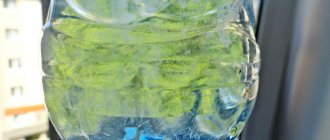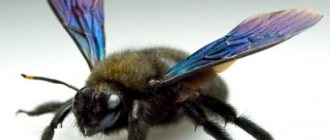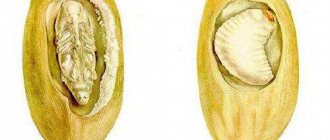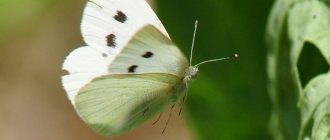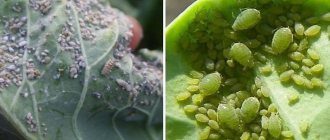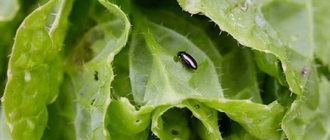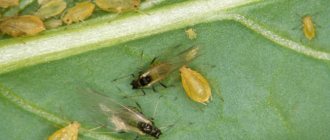Aphids are considered one of the main enemies of cabbage. Small insects literally attack vegetables and spoil them, interfering with the normal development of the crop. As a result, the crop may be damaged or even destroyed beyond repair.
You can get rid of aphids on cabbage using folk remedies; they act quickly and are completely harmless to the vegetable itself.
- What harm can aphids cause to cabbage?
- The best folk remedies for aphids Vinegar
- Tobacco
- Ammonia
- Ash
- Tar soap
- Potato and tomato tops
- Sagebrush
- Garlic and onion
- Chamomile
- Bay leaf
- Fitoverm
- Aggressor
Reasons why aphids are harmful to cabbage
Aphids on cabbage are a fairly common phenomenon.
For aphids, the plant juice that is of greatest interest is found in turnips, radishes, daikon, and cabbage. Simply put, in all cruciferous plants. Aphids are a very dangerous pest for the entire Cruciferous family. If you do not treat the plantings with chemicals or traditional methods, you can lose the entire harvest. If such a problem appears, then it needs to be solved as soon as possible, before the heads of cabbage begin to grow. For your control measures to be effective, you need to know well what this pest is, why it is dangerous and what methods of resistance exist.
aphids on cabbage
The structure of aphids has a miniature proboscis, which pierces the surface of leaves and shoots of plants. After this happens, the plant begins to wither and dry out, and subsequently death occurs. This happens because photosynthesis stops functioning, and chlorophyll becomes catastrophically low.
Aphids multiply on cabbage in a short time. As a rule, aphids prefer young cabbage leaves for food. As a rule, aphids are located on the underside of leaf blades. Often, aphids attack the growing points of cabbage.
Let's say a few words about how pests develop on a plant. The fact is that the eggs of this harmful insect remain for the winter on the remaining parts of the cruciferous crop. When the air temperature rises to 11 degrees, larvae are born. They then transform into wingless females who reproduce. And then winged aphids appear. This offspring is actively breeding, wandering from place to place.
As a result, multiplying aphids on cabbage can cause great harm to your harvest. Therefore, it is necessary to use various drugs against this pest in a timely manner.
The harmfulness of insects
The onset of an aphid infestation is easy to miss. Insects are found on the lower part of the bush. Over time, the leaves turn pale, become brittle, and the veins dry out. Garden crops are lagging behind in growth.
During severe infection, the leaves become twisted and deformed, and a sticky gray coating forms on the surface. The outer part is covered with multiple colonies of pests. Aphids change up to 30 generations per season.
The insect is capable of asexual reproduction. So, in early spring, females appear. Males that are born in the middle of the season only make the situation worse, quickly spreading throughout the garden.
Signs of cabbage aphid infestation:
- Slowing down plant development.
- Pale foliage.
- The leaves are twisting.
- Gray plaque is a waste product in the process of life, impairs photosynthesis and the absorption of nutrients.
- Increased activity of ants.
Attention: Aphids can infect cabbage, as they are carriers of about 25 viral and infectious diseases.
The main specificity of pests is rapid reproduction. Thus, even from single insects, multiple colonies appear in a short time.
How to overcome cabbage aphids
Many experienced gardeners plant tomato bushes next to cabbage plantings, the smell of which works well to repel aphids. You can also plant lavender, marigolds and calendula for the same purposes. It is worth remembering that to repel aphids, you need to plant plants that are not too tall. Otherwise, the cabbage plantings will receive unnecessary shade.
aphids on cabbage
There is another harmless way to combat aphids - attracting hoverflies. These are insects that eat aphids. However, it often happens that the houses created for hoverflies are inhabited by hordes of ants, which in turn are carriers of pests.
Often, various infusions are used against aphids. Another fairly simple and time-tested method is to irrigate cabbage plantings with ash infusion. You can also use a solution of laundry soap, vinegar or ammonia for these purposes.
If aphids have actually infested your cabbage plantings, then you can use insecticidal preparations. For example, such as Decis, Fufanon, Arrivo, Pirimix. Before using them, be sure to read the instructions.
Preventive measures
Preventive methods include interspersing cabbage bushes with garden crops that repel aphids. These include: fennel, carrots, lettuce, onions, chamomile. By planting cabbage between rows, you can protect the plant from pests. You also need to observe crop rotation. Having planted cruciferous crops twice on one plot, you can expect an aphid attack next year.
The best predecessors: garlic, legumes, carrots. After harvesting the cabbage, you need to dig up and get rid of the above-ground parts where insects lay “overwintering” larvae. The soil needs to be dug up and fertilizing added.
Rules of care and timely processing
There is no need to wait until aphids attack cabbage; you can protect the future harvest by preventative spraying of the garden before planting. Special agents are used that act on insects through the soil or directly on them. Before transplanting, young seedlings are also processed.
Once the plant has taken root, it can be sprayed with a mild insecticide. Treatment can be carried out when the first ovaries appear. It is not recommended to poison cabbage with chemicals after flowering; this may negatively affect the harvest in the future.
Attention: It is prohibited to use insecticides near water bodies, since many products have a negative effect on fish. They should not be used near apiaries: bees may die during active use.
Getting rid of cabbage aphids using folk methods
Aphids on cabbage are not a major pest, but even despite their modest size, they pose an impressive danger to cabbage. Various insecticides are undoubtedly effective means against aphids, since not only insects die, but also larvae. However, chemicals can accumulate in the heads of cabbage themselves, and thereby harm your body. And since all cabbage is consumed as food, insecticides become even more dangerous.
aphids on cabbage
The most harmless methods against aphids are folk ones. There are quite a large number of them, so you can choose the most effective method specifically for your case. Let's move on to the most popular of them.
Tar soap.
This soap contains birch tar. It is this component that is destructive not only for aphid colonies, but also for ants, which act as carriers of this very aphid.
The most popular recipe for a solution based on this component is the following: add one hundred and fifty grams of tar soap to ten liters of water. By treating your cabbage plantings with this product, you will not only get rid of aphids, but also help the leaves of your plants recover. The wounds on the plants begin to heal, and the aphids, which cannot tolerate the pungent smell of such soap, will leave your plantings. This procedure must be repeated seven days later.
Bay leaf.
This is also a popular method among gardeners to combat aphids. This spice contains a lot of essential oil, the smell of which repels aphids. This component is the main one both in dry formulations and in the form of infusions.
You can place dry bay leaves under the bushes in your garden bed. Or you can prepare an infusion. To do this, pour ten grams of bay leaves into a liter of hot water. You need to let it sit for about an hour with the lid closed. Repeat the procedure after five to six days.
Ammonia.
Ammonia is suitable as a means of getting rid of aphids. It is usually used in the form of an infusion. To do this, mix fifty milliliters of ammonia with ten liters of water. You also need to grate laundry soap using a coarse grater and leave it in a little warm water. Add soap to the solution. By the way, laundry soap is sometimes replaced with shampoo or dish soap. During the growing season, this solution is used more than once. The interval between applications should be about seven days.
If you use this method of combating aphids, then do not forget about your own safety measures. Be sure to wear a respirator or mask to protect your respiratory tract. You should wear rubber gloves on your hands. The preparation of such a solution must take place outdoors. This mixture should be stored in a place that children do not have access to.
Prevention
The appearance of aphids on cabbage can be successfully avoided if preventive measures are taken. They are as follows:
- pre-treatment of the land before planting:
- processing of cabbage seeds;
- processing of grown plants.
These stages will prevent aphids and other insects from appearing. The soil is most often treated with copper sulfate (2% solution) or a weak solution of potassium permanganate (pink color). Before planting, seeds also need to be soaked in potassium permanganate or a solution of hydrogen peroxide (2-4%).
When the cabbage grows, it is watered with onion broth prepared in the following way:
- peel from 3-4 onions;
- 5 liters of water.
The husks are steamed in hot water and kept for at least 3 days. Strain the broth through cheesecloth and spray the vegetables and soil. A couple of such treatments with a time interval of 1 time every 10 days will protect the future harvest.
Next to the cabbage, you can plant a bed of onions or garlic; sometimes they also grow lemon balm and mint. Strong odors from plants will make cabbage unattractive to aphids, and they will not attack it.
It is better to take care of the safety of the crop in advance than to hastily deal with the pest later. Untimely adoption of measures to combat insects or complete inaction often lead to a sad outcome - the gardener simply finds himself without cabbage. Aphids can be removed, and it is not that difficult to do, especially if they appeared not so long ago. It is worth paying attention to vegetables more often in order to be able to stop pests in time before they cause much harm.
The use of chemicals against cabbage aphids
There are a wide variety of chemical-based products against various insects, in particular against aphids. As a rule, such measures are resorted to if quick results are needed, as well as for use in large planting areas. Before using any chemicals, be sure to read the instructions first. When spraying chemicals, choose dry weather without wind. It is better to do this in the morning or evening. Be sure to protect exposed areas of the body and eyes. Do not smoke or eat near the area where the treatment is being carried out. After completing the procedure, wash your hands thoroughly with soap.
Experienced gardeners believe that the safest chemical product is Deltamethrin and insecticidal soap, which contains olives and flax.
Helpful Tips and Mistakes to Avoid
The main mistakes that contribute to the spread of aphids include:
- poor quality garden cleaning in the fall;
- choosing a place where plants from the cruciferous family have already been planted for several years in a row;
- planting weakened seedlings;
- non-compliance with agrotechnical rules when growing cabbage.
Summer residents should pay special attention to the following nuances:
- chemicals cannot be used if there is less than a month left before the expected harvest;
- Biological methods of controlling aphids sometimes turn out to be ineffective, so it is better to immediately give preference to folk remedies.
Cabbage varieties that are not harmed by aphids
Of course, breeders did not stand aside and invented many varieties that have a high degree of resistance to various pests, in particular to aphids. Here are the most popular ones:
Aggressor.
This variety comes from Holland. In terms of ripening, it is classified as late-ripening. It does not require much effort and time to care for. It can grow well even under not very favorable conditions. Heads of cabbage do not tend to crack.
Amager 611.
The variety is late in terms of ripening. Has good resistance to low temperatures. Gives good results in terms of yield. The fruits are well stored and transported.
Bartolo.
The variety comes from Holland and is a late variety. Gives a high yield, has good immunity against many diseases and pests.
Snow White.
This variety is late ripening. The head of cabbage is round in shape, slightly flat. The variety is very shelf-stable, the fruits can retain their quality for six months. This variety is universal in purpose. It is practically not attacked by pests, in particular aphids.
Why is it dangerous?
Harmful insects feed on cabbage juice, which leads to weakening of the plant. As a result, vital processes are disrupted, the development of the plant is suspended, and it dies.
As aphids reproduce, they form entire colonies. As a result, not only the cabbage suffers, but also the plants growing nearby.
If you do not start fighting aphids in time, there is a risk of death of many plantings. In addition to harming the plant, insects carry viruses and bacteria. Since aphids are omnivorous, they easily attack a wide variety of plants. In addition, it is capable of transferring diseases from diseased bushes to healthy ones.
Cabbage eaten by slugs and snails
These leisurely and deceptively harmless creatures can cause serious damage to cabbage. They feed mainly at night and gnaw holes and entire furrows in cabbage leaves.
Slugs and snails on cabbage.
How to remove slugs using folk remedies:
— Sprinkle the ground with mustard powder or crushed eggshells;
- remove the lower leaves so that slugs cannot crawl onto the head of cabbage from the ground, or build a special “collar” covering the lower part of the head of cabbage.
— spray the soil with infusion of hot pepper;
- water the cabbage with water with the addition of ammonia (50 ml per 5-6 liters of water), wait for the slugs to crawl out of the heads of cabbage and the ground, then repeat the procedure.
Protecting young cabbage from mole crickets and other pests.

